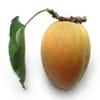Health Benefits
Arthritis treatment, Cancer prevention, Eczema treatment, Increases metabolic rate, Kidney stone treatment, Prevents constipation, Removes toxic metals, Treatment of alzheimer's disease
Asthma treatment, Bronchitis treatment, Cancer prevention, Heart care, Increases metabolic rate
General Benefits
Anti oxidant properties, Anti-inflammatory properties, Controls blood pressure, Digestive aid, Strengthens bones, Treatment of sore eyes
Anti-inflammatory properties, Controls blood pressure, Digestive aid, Eye care, Healing of wounds, Maintains healthy cholesterol level, Strengthens bones, Treatment of sinusitis, Treatment of common cold
Skin Benefits
Heals sunburn, Hydrates skin, Skin rejuvenation, Skin revitalization, Treatment of dark spots, Treatment of skin diseases
Anti-aging benefits, Brightens and lightens complexion, Skin cleansing, Treatment of acne, Treatment of dark spots
Hair Benefits
Promotes longer and healthier hair, Protects hair, Regulates hair growth, Shiny hair
Prevents hair loss
Allergy Symptoms
Breathing difficulty, Decrease in blood pressure, Diarrhea, Itching, Red rash, Runny nose, Sneezing, Vomiting, Watery eyes
Abdominal pains, Itching in tongue and other parts of mouth, Sneezing, Swelling, Tingling sensation in wrist and face, Vomiting, Wheezing
Side Effects
Stressed heart, Irritation, Swelling, Swelling around mouth, Throat swelling, Tongue swelling, Strained blood vessels
Causes swollen mouth, Allergic reaction, Diarrhoea, Nausea, Skin rash, Vomiting
Lactating Women
Not Available
No
Best Time to Eat
Along with meal, As a snack in the late afternoon, Eat the fresh ones, avoid mixing with any other foods, don't eat after meal., Strictly avoid empty stomach
Best if taken as a breakfast (or empty stomach), As a snack in the late afternoon, Eat the fresh ones, avoid mixing with any other foods, don't eat after meal., Morning time (before lunch)
Vitamin B5 (Pantothenic Acid)
Vitamin C (Ascorbic Acid)
Vitamin K (Phyllochinone)
Calories in Fresh Fruit with Peel
Not Available
Calories in Fresh Fruit without Peel
Calories in Frozen Form
Not Available
Calories in Dried Form
Not Available
Calories in Canned Form
Not Available
Calories in Juice
Not Available
Calories in Jam
Not Available
Calories in Pie
Not Available
Type
Fruit vegetable, Melon
Berry, Tropical
Season
Spring, Summer
Autumn
Varieties
Armenian, English, Garden, Kirby, Lemon and Persian
Smooth Cayenne, Abacaxi, Red Spanish and Queen
Color
Dark green, Green
Yellow
Inside Color
White
Yellow
Taste
Juicy, Watery
Strong, Sweet, Tart
Origin
India
Central America, South America
Grows on
Vines
Not Available
Soil Type
Loam
Clay, Sandy loam, Well-drained
Climatic Conditions
Warm
Hot, Sunny
Facts about
- Outer waxy coating of cucumber can erase the pen writing.
- Pressing cucumber on roof of mouth for 30 sec will eliminate bad breath.
- It is made up of 96% water.
- English cucumber can grow longer than 2 feet.
- A single pineapple takes 3 years to reach maturation.
- Pineapple is not an apple, but is actually a berry.
- The name is with reference to its resemblance to pine cones.
- Pineapple is sweeter if scales are more.
Top Producer
China
Costa Rica
Other Countries
Egypt, Indonesia, Iran, Japan, Russia, Spain, Turkey, Ukraine, United States of America
Brazil, India, Philippines, Thailand
Top Importer
France
United States of America
Top Exporter
Spain
Costa Rica
Botanical Name
Cucumis sativus
Ananas comosus
Synonym
Not Available
Ananas sativus
Subkingdom
Tracheobionta
Tracheobionta
Division
Magnoliophyta
Magnoliophyta
Class
Magnoliopsida
Liliopsida
Subclass
Dillenhidae
Commelinidae
Order
Cucurbitales
Poales
Family
Cucurbitaceae
Bromeliaceae
Species
C. sativus
A. comosus
Generic Group
Not Available
Pineapple
Compare Cucumber and Pineapple
It is important compare Cucumber and Pineapple as both the fruits have a different nutritional value. Their comparison can be done on the basis of their vitamin and mineral content, calories, benefits as well as characteristics, making it easier for us to choose the best fruit for our diet. Their general health benefits are as follows:
Cucumber Benefits: anti oxidant properties, anti-inflammatory properties, controls blood pressure, digestive aid, strengthens bones and treatment of sore eyes.
Pineapple Benefits: anti-inflammatory properties, controls blood pressure, digestive aid, eye care, healing of wounds, maintains healthy cholesterol level, strengthens bones, treatment of sinusitis and treatment of common cold.
Fruits are also used as a remedy for various hair problems. The hair benefits of Cucumber are: promotes longer and healthier hair, protects hair, regulates hair growth and shiny hair and hair benefits of Pineapple are: prevents hair loss. Some fruits are known to cause allergic reactions. The allergy symptoms of first fruit are: breathing difficulty, decrease in blood pressure, diarrhea, itching, red rash, runny nose, sneezing, vomiting and watery eyes and the symptoms of second fruit are: abdominal pains, itching in tongue and other parts of mouth, sneezing, swelling, tingling sensation in wrist and face, vomiting and wheezing. Get sorted Cucumber vs Pineapple comparison with the help of fruit comparison tool by fruitvs.com.









